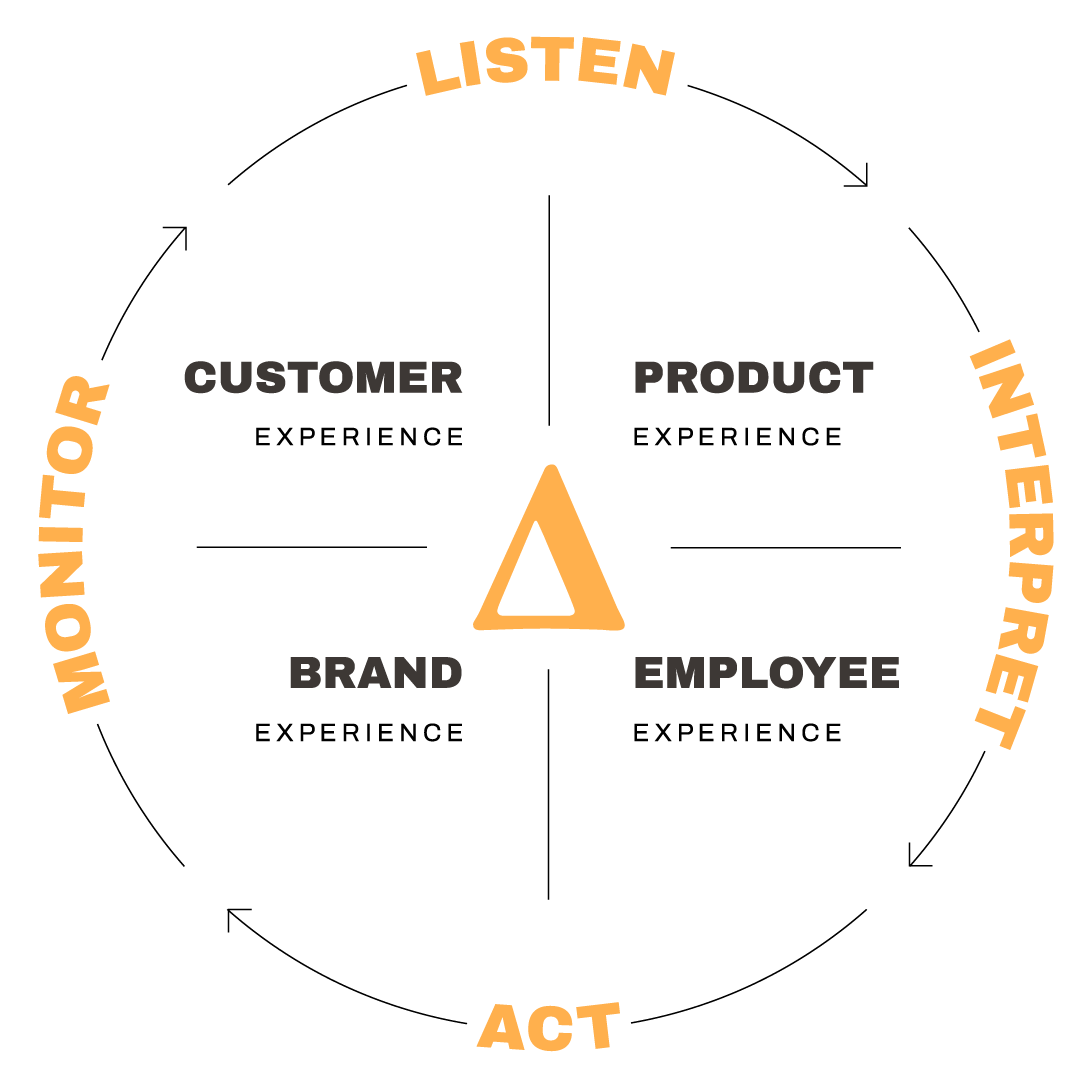It is a widely accepted fact that a happy customer is a returning customer. Someone who has enjoyed your service (in-store or online), product, and price are more likely to buy from you again and more importantly recommend you to their friends and family. But, with competition increasing and the barrier of change decreasing, providing a universally good shopping experience is no longer enough. Making a customer happy is now not just based on price and quality of product but on how you treat them at every step of the journey. Some of that journey will even start outside of your owned properties. So how can you ensure that customers are feeling valued and appreciated at every step? You have to integrate customer experience (CX) into your overarching business strategy.
The experience your customer will have with you needs to be at the centre of all your business decisions that affect the customer journey. This mindset is the founding block for customer centricity. However, you may be thinking: “Isn’t it risky to have all your decisions be based on your customers' whims and wishes?”
According to Forrester and their CX Index Score report, the financial benefits substantially outweigh the potential risk. Using their CX Index, Forrester was able to identify that on a scale from -100 to 100, even just one point difference could mean over a billion dollars’ worth of profit difference. Here are some of the most interesting numbers from the report:
- $1.1 Billion impact for automotive
- $523 million for retailers
- $110 million for banks
These figures clearly demonstrate how important it is to prioritise and integrate CX into your business to not miss out on significant profit margins. So, how can you get started?
How Can You Get Started on CX Today?
The first step in making your customers happy is understanding what your customers want. These days, through digitalisation and e-commerce, anybody with an internet connection could be your next customer, and these people will be as diverse as they come. Making assumptions on their behalf will be detrimental to your sales pipeline.
To avoid this scenario, you need to directly reach out to these potential customers. Surveys are one of the most effective ways for companies to talk to their customers during their shopping experience. Embed integrated, quick, and non-disruptive micro surveys throughout your customer journey online so you can get a much stronger picture of what needs improving. You might even be positively surprised by how much your current customers do enjoy your services.
Use this feedback to build a better experience for the next customer that wants to buy from you. Consolidate all the survey results and enrich them with ethnographic and demographic data, to build a clearer image of who your current customers really are and what they think of you as a company.
If you want to gather deeper insights , an insight community where your customers can answer more targeted questions would be invaluable to you. Communities like these allow you to speak with your customers on a personal level, allowing for discussion and ideation together with your customers.
Co-creation and the Importance of Closing the Feedback Loop
CX isn’t just surveying though. Asking your customers what they want is only the first step in ensuring the best experience for them. To close the loop, you must gather their opinions and feedback and then determine a course of action, such as updating your products or services. This strategy is referred to as co-creation and is vital in building trust, loyalty, and encouraging further engagement from your customers.
One way of igniting co-creation is asking customers for their feedback before product or service launches and allowing them to actively shape the customer experience around your new offers. Ultimately, they are the ones who will be using your new product and their preferences are vital for the success of your product.
In practice, this process might start with asking your insight community members to take a look at the prototype or product proposal and offer ideas on how to improve it. Then, pick the Top 10 (or however many you find reasonable) most relevant options and have the community vote on them to pick five. Have forum discussions to deepen the understanding of those top five ideas to develop a priority list and build them into your product roadmap. This whole process can take as little as 48 hours.
However, once those changes have been built into the product pipeline, your customers’ influence should not stop. Once you have listened, interpreted, and acted on their feedback, you now have to share the ongoing changes and monitor your customers’ reactions. That way you ensure you properly implement their wishes.

How Red Bull became the Hero of Parents
Co-creation does not need to be limited to product development. It can also assist in shaping how your company brands itself. In 2020, Red Bull realised that sales amongst their target audience, 18-40-year-old men who participate in outdoor sports events, was depleting due to the lack of sports events and training for the majority of athletes being halted. Red Bull had to find a way to increase sales despite the declining market.
Luckily, Red Bull has a flourishing insight community which they turned to in order to gauge their customers’ relationship to the brand. Through surveys and demographic analysis, they discovered an often overlooked consumer of their flagship energy drinks: parents in their 30s and 40s who drink two or three Red Bull cans a day to get through their day. With schools closing and working from home becoming the norm, an increasing number of parents had to fulfill increasing double duty.
After this discovery, they adjusted their marketing targets and messages to reach their current customer rather than their assumed target audience and were able to achieve a 4% increase in overall sales in a down year in the market. Customers felt more connected to the brand and their overall experience of the product became more relatable to them, improving their opinion and increasing engagement.
Case studies such as Red Bull’s highlight the importance of excellent customer experience management. It is an indispensable strategy in a constantly changing market. If you truly understand who your customers are at all times and what they need from you, selling to them will become smoother and more profitable. Ultimately, we believe you should be empathetic to your customers’ changing circumstances and opinions and encourage co-creation to crank up sales.








